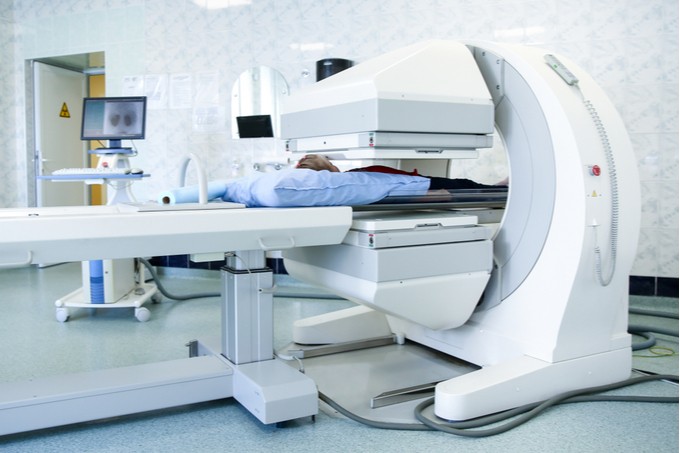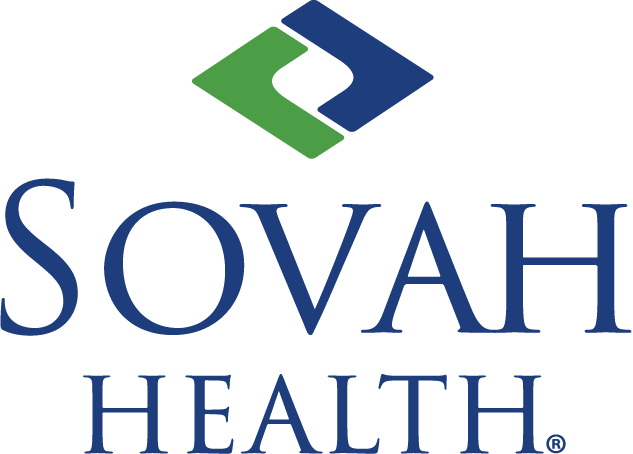Nuclear Medicine
Nuclear medicine imaging serves to diagnose or care for any anomaly within a patient’s anatomy and its operation during the beginning stages of illness. Patients undergoing nuclear medicine should understand the procedure is relatively painless and the exposure to radiation is compatible to that of a diagnostic x-ray.
Nuclear medicine is a medical imaging specialty used to identify and care for particular illnesses using less intrusive measures than extensive testing or surgery. This is done by dispensing a combination of chemicals with radioactive nuclide medicine either intravenously, orally, or through inhalation.

Next Steps
Danville Campus
For more information or to make an appointment, contact our Danville campus today.
Martinsville Campus
For more information or to make an appointment, contact our Martinsville campus today.
Frequently Asked Questions
What is it?
Nuclear medicine uses radioactive substances and a special camera to see inside your body. These scans can show how organs, such as your heart and lungs, are working.
Uses
Diagnosing blood clots, cancer, heart disease, injuries, infections and thyroid problems.
What Happens
Before the test, you receive a small amount of radioactive material, which makes parts of your body show up better. The material can be given through an intravenous (IV) tube or syringe in your arm. Some is given in a drink. You wait as the material is absorbed by your body. This make take an hour or more. Then you lie still on a table while the camera takes images.
What You Need to Know
Warning: Please indicate whether you are or may be pregnant when any nuclear medicine procedure.
Lung Scan
A lung scan can detect lung abnormalities, particularly pulmonary embolism, or other types of breathing problems.
Procedures
Although the lung scan is a two part procedure, no preparation is necessary.
Part I:
- The first part of the examination is called a ventilation scan. You inhale trace amounts of tasteless, odorless, radioactive gas through a mask that enables imaging to be performed.
Part II:
- The second part of the examination is called perfusion. It requires an injection of radioactive particles which shows the blood perfusion throughout the lungs. Multiple images are taken from front and back.
- The examination requires approximately 1 hour.
- Results of the scan will be given to you by your physician.
Hida Scan
A hida scan is an examination of the biliary system which provides information about the gallbladder and bile ducts.
Procedures
- Please do not eat 6 hours hours prior to the procedure.
- You will receive an injection of a radioactive tracer that is secreted by the liver.
- Images of the abdominal area are taken.
- Next a 30 minute scan will be performed to indicate the response of the gallbladder to hormonal stimulation. It requires a second injection.
- The examination requires approximately 1.5 hours.
- Results of the scan will be given to you by your physician.
Bone Scan
The primary reason for a bone scan is to evaluate possible bone abnormalities such as injury, fracture, tumor, or unexplained bone pain. This may be performed as a phased procedure using initial and delayed imaging as indicated under lung scan.
- No preparation is necessary.
- Please bring any pertinent outside X-rays with you.
- You receive an injection of radionuclide that binds to bone.
- You will need to drink plenty of fluids and void often. This reduces radiation exposure to the bladder and improves distribution of radionuclide to target areas.
- Return for imaging 3-4 hours after the injection.
- Bone imaging takes approximately 30 minutes.
- A SPECT (Single Photon Emission Computed Tomography) examination may be required for a thorough evaluation. Correlative X-rays also may be ordered at the time of the bone scan to improve diagnostic accuracy.
Cardiac Rest & Stress Test
The MIBI stress test provides your physician with a detailed evaluation of your cardiovascular fitness. It can help your doctor evaluate circulation to your heart muscle in a controlled exercise environment. This test also helps your doctor evaluate the condition of your coronary arteries.
MIBI Stress Test Procedures
The MIBI stress examination is performed in two parts.
Please do not eat prior to or during the test. If you have diabetes, please check with your doctor. When you arrive, you'll need to provide your medical history (including a list of medications) and sign an informed consent.
Part I:
- An intravenous line is placed in your arm.
- Your chest will be prepared for EKG electrode placement for monitoring your heart activity. Your chest may need to be shaved.
- There will be a physician and trained staff member with you during your test.
- You'll be introduced to a power-driven treadmill or testing bicycle and asked to exercise at a low level initially. The level of exercise will then be slowly increased.
- Your heart rate, blood pressure, appearance, and other observations will be monitored closely before you begin, as you exercise, and after the test.
- If any difficulties are noticed, testing will be discontinued.
- Near the peak of exercise, thallium, a nuclear tracer, is injected into the intravenous line.
- Exercise continues 1 minute after the sesta MIBI injection, and you are taken by stretcher to the Nuclear Medicine Department for 30 minutes of scanning.
Part II:
The sesta MIBI injection is repeated again in 3 hours and scanning is repeated an hour later for 30 minutes.
All MIBI stress examinations use Single Photon Emission Computed Tomography and sophisticated computer processing for data analysis.
Results of the test will be given to you by your physician.
Other Nuclear Medicine Services
- Gallium Scan -- looks for sites of infection or tumors.
- Indium Labelled White Blood Cell Scan -- evaluates possible infection using the patient's white blood cells, which are radio-labelled.
- G.I. Bleed -- indicates unidentified sources of gastrointestinal bleeding.
- Liver/Spleen Scan -- evaluates functional liver disorders, i.e., cirrhosis, hepatitis, metabolic disorders.
- Labelled Red Cell Scan -- differentiates benign vascular liver lesions from other tumors.
- Meckle's Scan -- identifies a disorder that affects 1-2% of the population... usually children; the symptoms include abdominal pain and rectal bleeding.
- Renal Imaging -- evaluates renal function. It may be performed with a diuretic to determine the possibility of obstruction.
- MUGA Scan -- determines cardiac function and wall motion.
- Thyroid Scan and Uptake -- detects thyroid nodules. Useful for evaluating various thyroid disorders.
More Information
Locations
Martinsville, VA 24112
Danville, Virginia 24541
